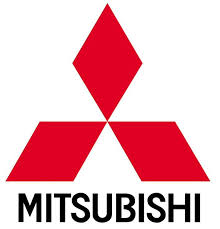Sigma V6-2972cc 3.0L SOHC (1989)

When the timing belt is to be reused, in order to allow reinstallation of the belt so that it travels in the same direction as before it was removed,
mark the direction of travel with an arrow before removing it.
CAUTION:
-
As water or oil on the belt can seriously reduce its usable life, ensure that the timing belt, sprocket, and tensioner stay clean and dry while
removed, and never wash them. Parts that have become too dirty should be replaced.
-
When any of the parts are oily, check to see whether there are any oil leaks in any of the oil seals or the camshaft oil seal on the front of the
engine.
INSPECTION
-
Timing belt.
Check the belt in detail. If the following is evident, replace belt with a new one.
(1) Hardened back surface rubber.
Back surface glossy. non-elastic and so hard that even if a finger nail is forced into it, no mark is produced.
(2) Cracked back surface rubber
(3) Cracked or separated canvas
(4) Cracked tooth bottom
(5) Cracked side of belt
(6) Side of belt badly worn
NOTE:
-
Normal belt should have clear-cut sides as if cut with a sharp knife.
